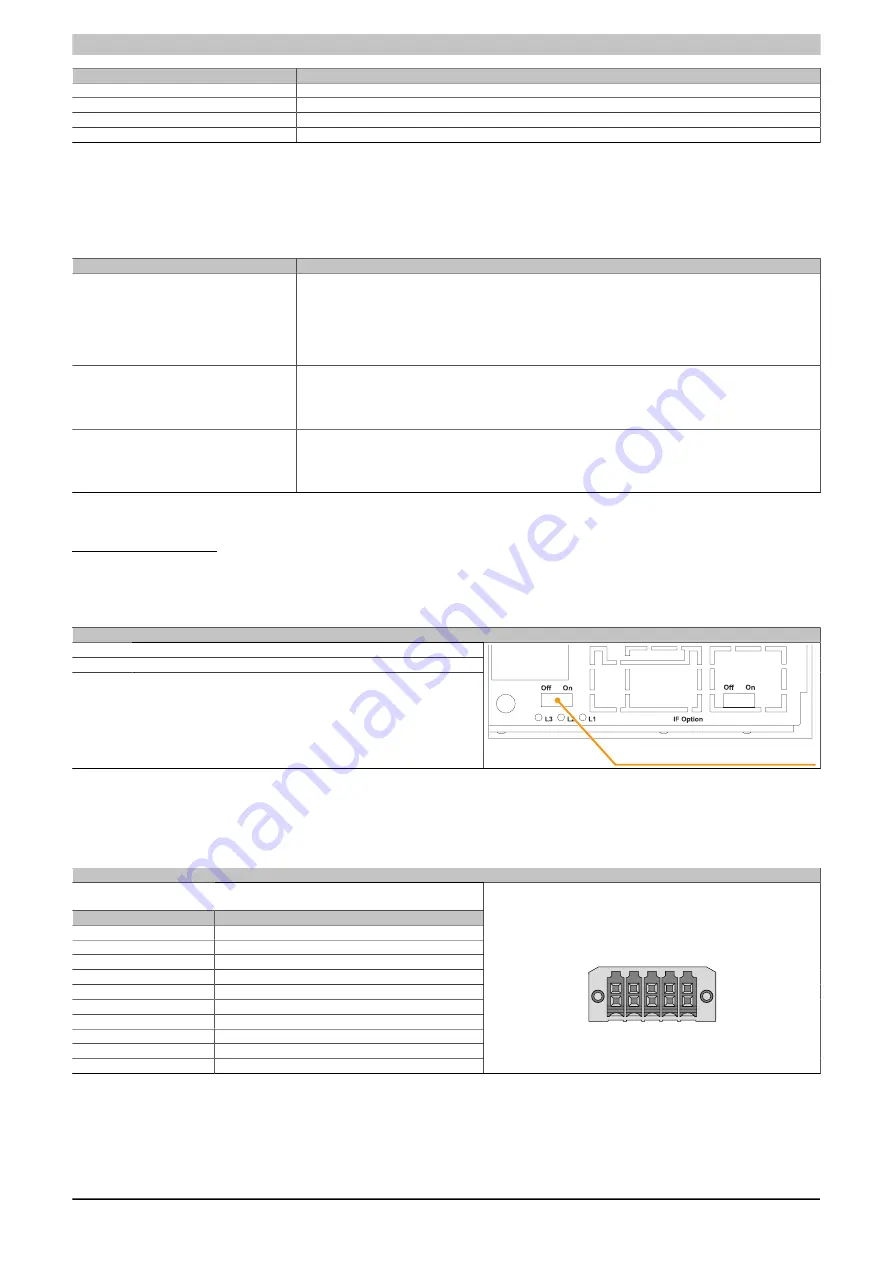
Technical data
Panel PC 2200 built-in devices User's manual V 1.05 Translation of the original documentation
193
Extension
Transfer rate
≤1000 m
Typ. 50 kbit/s
≤200 m
Typ. 250 kbit/s
≤100 m
Typ. 500 kbit/s
≤15 m
1)
Typ. 1 Mbit/s
Table 196: CAN - Bus length and transfer rate
1)
The specified cable length is only valid with the values specified in
Tab. 194 "CAN driver settings"
. Otherwise, the cable lengths depend on the values in
the timing register.
Preferably, the cable material used should have the following properties or deviate only slightly from them in order
to achieve an optimal transfer rate.
CAN cable
Property
Signal line
Cable cross section
Wire insulation
Conductor resistance
Stranding
Shield
2x 0.25 mm² (24AWG/19), tinned copper stranded wire
PE
≤82 Ω/km
Wires stranded in pairs
Pair shielding with aluminum foil
Ground conductor
Cable cross section
Wire insulation
Conductor resistance
1x 0.34 mm² (22AWG/19), tinned copper stranded wire
PE
≤59 Ω/km
Outer jacket
Material
Properties
Cable shield
PUR compound
Halogen-free
Composed of tinned copper wires
Table 197: CAN cable requirements
Terminating resistor
A terminating resistor is integrated on the interface option. It is located near the ETH1 interface. A switch is used
to switch the terminating resistor for the CAN bus interface on and off. LED status indicator "L1" indicates whether
the terminating resistor is switched on or off.
Terminating resistor
On
The terminating resistor is switched on.
Off
The terminating resistor is switched off.
Terminating resistor
Table 198: Terminating resistor
2.3.5.7.3.4 X2X Link master interface - Pinout
The X2X Link master interface on the system unit is referred to as "IF option".
X2X Link master
1)2)
The electrically isolated X2X Link master interface is designed as a 10-pin female con-
nector.
Pin
Pinout
1
X2X H
2
Shield
3
X2X L
4
X2X GND
5
-
6
-
7
-
8
-
9
-
10
-
10-pin, male
1 3 5 7
2 4 6 8 10
9
Table 199: 5ACCIF01.FPSC-001 - X2X Link Master interface
1)
The interfaces, etc. available on the device or module have been numbered for the purpose of clear differentiation. This numbering may deviate from the
numbering used by the respective operating system, however.
2)
This interface can only be used in Automation Runtime and is displayed as IF2 in Automation Studio / Automation Runtime. It is not a "PC interface" and
therefore not displayed in BIOS.
















































